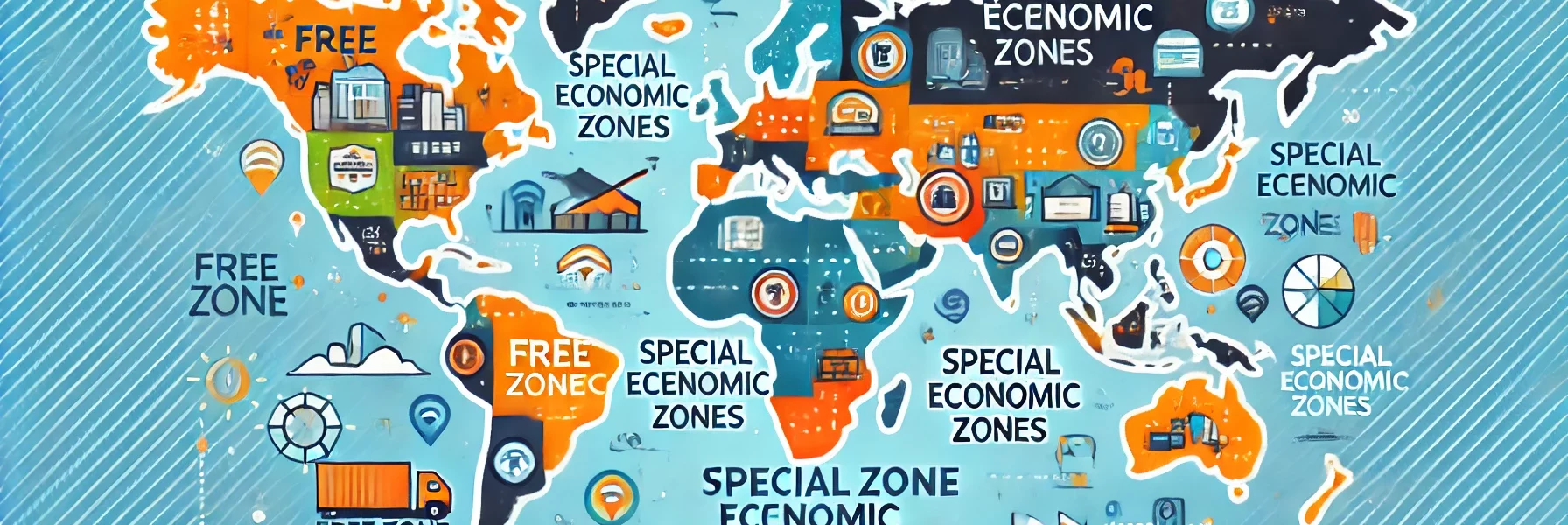Catalysts of Economic Growth
Introduction
Free zones and special economic zones (SEZs) are designated areas within a country where business and trade laws differ from the rest of the country. These zones aim to attract foreign direct investment (FDI), boost exports, and stimulate economic growth by providing favorable conditions for businesses. They offer various incentives such as tax exemptions, simplified customs procedures, and less stringent regulatory requirements. Understanding the nuances of these zones can highlight their importance in global trade and economic development.
What are Free Zones?
Free zones, also known as free trade zones (FTZs), are specific areas where goods can be imported, manufactured, and re-exported without the intervention of customs authorities. These zones are typically located near seaports, airports, or national borders to facilitate trade. The primary objective of free zones is to reduce the costs and logistical hurdles associated with importing and exporting goods.
Key Features of Free Zones:
- Duty-Free Imports and Exports: Goods can be brought into the zone without paying import duties, which are only applied if the goods enter the national market.
- Simplified Customs Procedures: Streamlined processes for handling shipments reduce delays and costs.
- Tax Incentives: Reduced or zero taxes on profits, dividends, and property encourage businesses to set up operations in these zones.
- Infrastructure and Services: Enhanced infrastructure such as warehouses, manufacturing facilities, and logistics services support business activities.
What are Special Economic Zones?
Special economic zones (SEZs) are broader in scope compared to free zones. They encompass a variety of zones, including free trade zones, export processing zones, and industrial parks. SEZs are designated areas that enjoy economic regulations different from other regions in the same country, aiming to attract investment and boost economic activity.
Key Features of SEZs:
- Investment Incentives: Similar to free zones, SEZs offer tax holidays, duty-free imports of raw materials, and subsidies for investments in infrastructure.
- Regulatory Flexibility: Businesses in SEZs often benefit from relaxed labor laws, environmental regulations, and administrative procedures.
- Focused Economic Activities: SEZs often specialize in specific industries such as technology, manufacturing, and logistics, fostering a competitive environment for these sectors.
- Enhanced Infrastructure: SEZs are equipped with state-of-the-art infrastructure, including transportation networks, utilities, and communication facilities.
Benefits of Free Zones and SEZs
- Attracting Foreign Investment: These zones create an attractive environment for multinational companies by offering financial and regulatory benefits.
- Job Creation: By encouraging the establishment of businesses, these zones generate employment opportunities for the local population.
- Economic Diversification: SEZs and free zones help diversify the economy by promoting industries that might not otherwise thrive in the region.
- Export Growth: Facilitating easier and cheaper trade processes boosts the export potential of the country.
- Technological Advancement: The influx of foreign companies often brings new technologies and business practices, fostering innovation.
Global Examples
- China: The Shenzhen SEZ, established in 1980, transformed a small fishing village into a global manufacturing hub, significantly contributing to China’s economic rise.
- United Arab Emirates: The Jebel Ali Free Zone in Dubai is one of the world’s largest and most successful free zones, hosting thousands of companies from over 100 countries.
- India: The Special Economic Zones Act of 2005 has led to the development of numerous SEZs, driving growth in IT, pharmaceuticals, and manufacturing sectors.
Conclusion
Free zones and special economic zones are powerful tools for economic development, attracting foreign investment, creating jobs, and boosting exports. By offering a conducive business environment with various incentives, these zones play a crucial role in the global economic landscape. Countries worldwide continue to leverage these zones to stimulate economic growth and integrate into the global economy.

